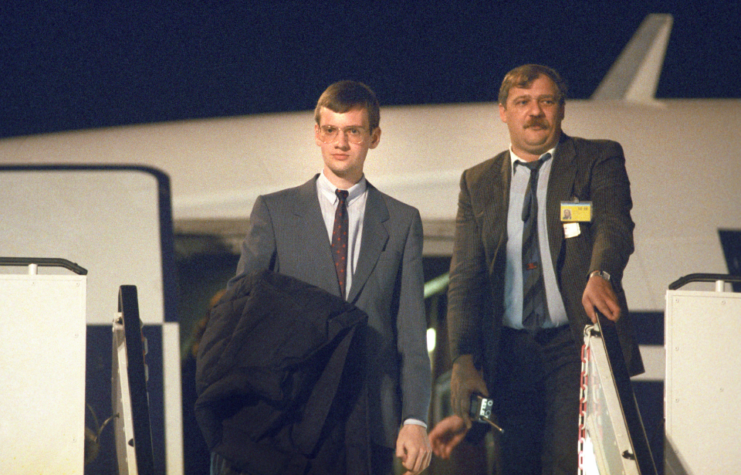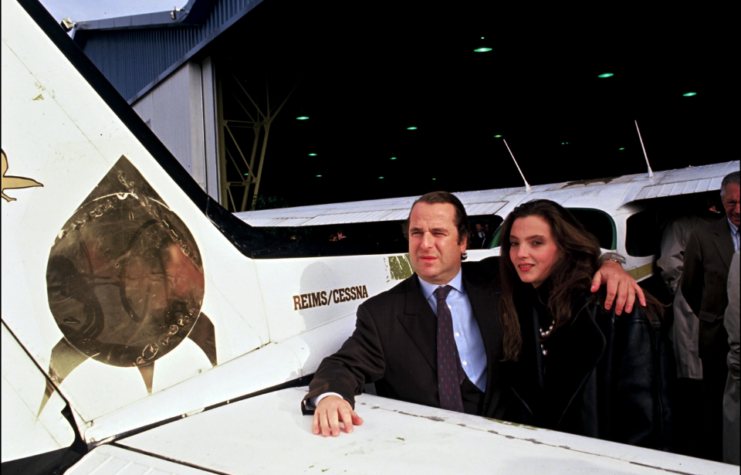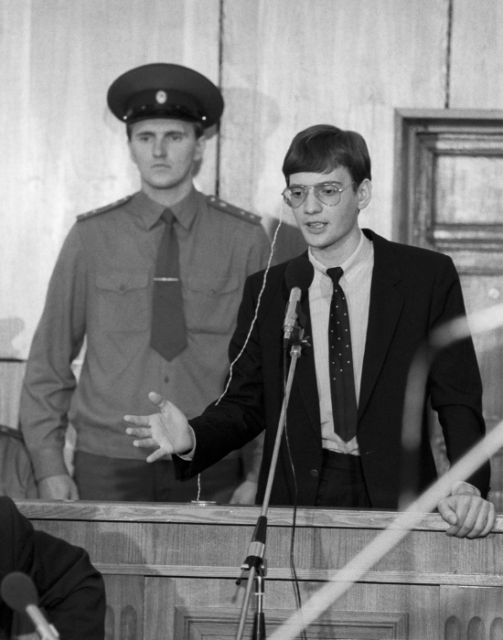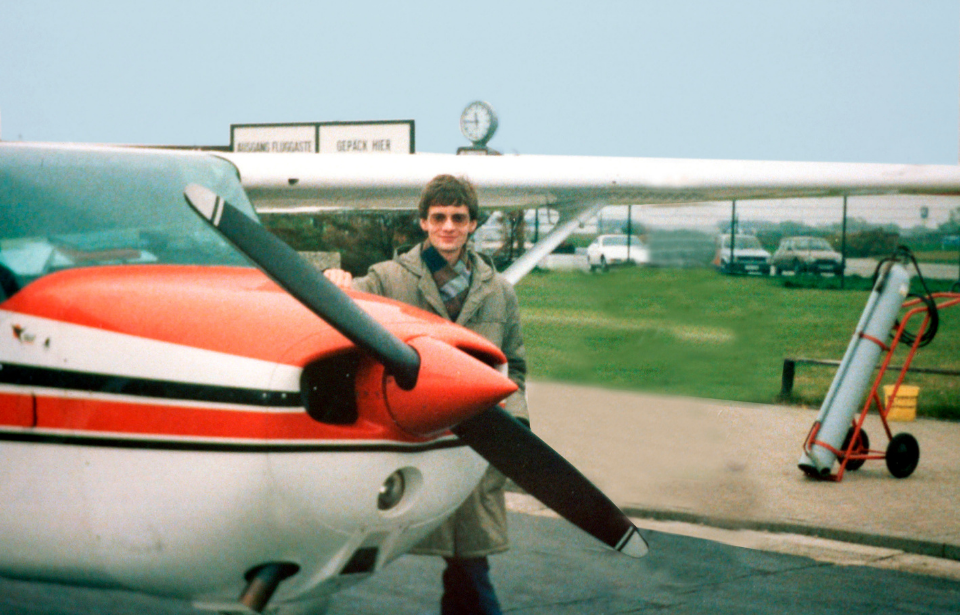In 1987, Mathias Rust, a West German teenager, seemingly did the impossible when he flew a Cessna light aircraft through 500 miles of the most highly defended airspace in the world, all in the name of peace.
Mathias Rust had just 50 hours of flying experience when he performed this daring stunt, during a time when the Cold War was still in full swing. He was motivated by the feeling that he could make a difference after a summit between the U.S. and USSR ended in a stalemate.
Mathias Rust was on a mission of peace
“I thought every human on this planet is responsible for some progress and I was looking for an opportunity to take my share in it,” was his reasoning. He added, “I was thinking I could use the aircraft to build an imaginary bridge between West and East to show that a lot of people in Europe wanted to improve relations between our worlds.”
A rather optimistic and naïve mindset of a teenager? Maybe. But Rust wasn’t going to let this stop him.
His imaginary bridge came in the form of a rented Reims Cessna F172P, D-ECJB. On the 13th of May 1987, Rust informed his parents that he was taking his aircraft around northern Europe, in order to gain valuable flying experience.
He departed from Uetersen airfield in West Germany and made his way first to the Shetland Islands. After staying the night there, he then stayed one night on the Faroe Islands, before making his way to Reykjavik, Iceland. This was the location of the unsuccessful summit between the US and USSR.

From here, he set out for Bergan, Norway, before finally reaching Helsinki in Finland on May 25th. This was to be his last stop before making the dash into the USSR, and where he would spend days trying to figure out if his plan was a good idea or not.
“Of course I was afraid to lose my life,” he says.
He was right to be concerned, as the Soviet Union had a much-touted and feared air defense network at the time, one which tragically shot down a South Korean airliner that accidentally carried 269 people too far into this network, causing the deaths of all on board.
“I was weighing if it is really responsible, reasonable, to take this kind of risk. At the end I came to the conclusion, ‘I have to risk it.'” Rust was risking Soviet radar, ground-to-air missiles, and jet interceptors, all for his cause. The likelihood that he would not survive was very high, perhaps much higher than he appreciated at the time.
He made his fateful decision mid-flight
He departed Helsinki on May 28th. Still not entirely sure whether he was going to go through with his plan or not, he informed Helsinki’s air traffic control that he would be heading to Stockholm, Sweden. He was about half an hour into his flight when he settled on his decision.
“I made the final decision about half an hour after departure. I just changed the direction to 170 degrees and I was heading straight down to Moscow.” Soon after, air traffic control realized this change in course and tried to make contact, as he was heading into the busy Helsinki-Moscow route. Rust had already dropped off of radar, turned off his communication equipment, and was full steam ahead on his mission.

With his sudden change in course and lack of communication, an emergency was declared, and search and rescue was dispatched to find him. Coincidently, they found an oil slick near where Rust had “disappeared,” but they found no evidence of wreckage. At 14:29 he was detected by Soviet air defense radar. Attempts were made by the Soviets to contact him to no avail, causing him to be given a threat status.
Rust was tracked by multiple SAM missile sites, which wanted to engage but failed to be given permission. Two MiGs were scrambled to intercept him. “It passed me on my left side so close that I could see the two pilots sitting in the cockpit and I saw of course the red star of the wing of the aircraft,” Rust recalled.
Soon after this, unable to receive permission to engage, the MiGs lost Rust in the clouds. While attempting to relocate him, he dropped off of the radar again. Thanks to a massive combination of new routines, training, confusion, and luck, Rust’s aircraft was re-designated as friendly, allowing this 19-year-old free passage through the most heavily guarded airspace in the world.
Landing and arrest
He reached Moscow at about 19:00. His original goal was to land inside the Kremlin, but he changed this to Red Square after realizing that the walls could let the Soviets deny the event ever happened. After circling low around the square, large numbers of pedestrians meant he had to again change his landing location to the Bolshoy Moskvoretsky Bridge, near Red Square.
After touching down, he was quickly greeted by shocked and confused locals, declaring “I am here on a peace mission from Germany.”
Some asked for autographs. He told them he was from Germany, to which they assumed East Germany, but were surprised when he said West Germany.

Naturally, Rust was quickly arrested and interviewed by Soviet police, who refused to believe he acted alone. After it became clear he was a lone teenager on a perhaps slightly unwise mission, and after major international embarrassment, Soviet President Mikhail Gorbachev used it as a prime opportunity to remove people from power who opposed him politically. More than 150 people would be sacked as a result.
More from us: US Army’s Night Vision Technology Makes Life Look Like a Video Game
Rust was tried and sentenced to a four-year sentence in a labor camp. Luckily for him, this never came to be, and instead, he spent his sentence in Lefortovo temporary detention facility in Moscow. Fourteen months later, U.S. President Ronald Reagan and Gorbachev agreed to eliminate intermediate-range nuclear weapons in Europe, and Rust was released as a goodwill gesture.
Today, Rust has no regrets about his actions, believing he enabled Gorbachev to pass his reforms more quickly. Today, he’s swapped out internationally witnessed stunts for a more humble career as a financial analyst and a yoga instructor.
